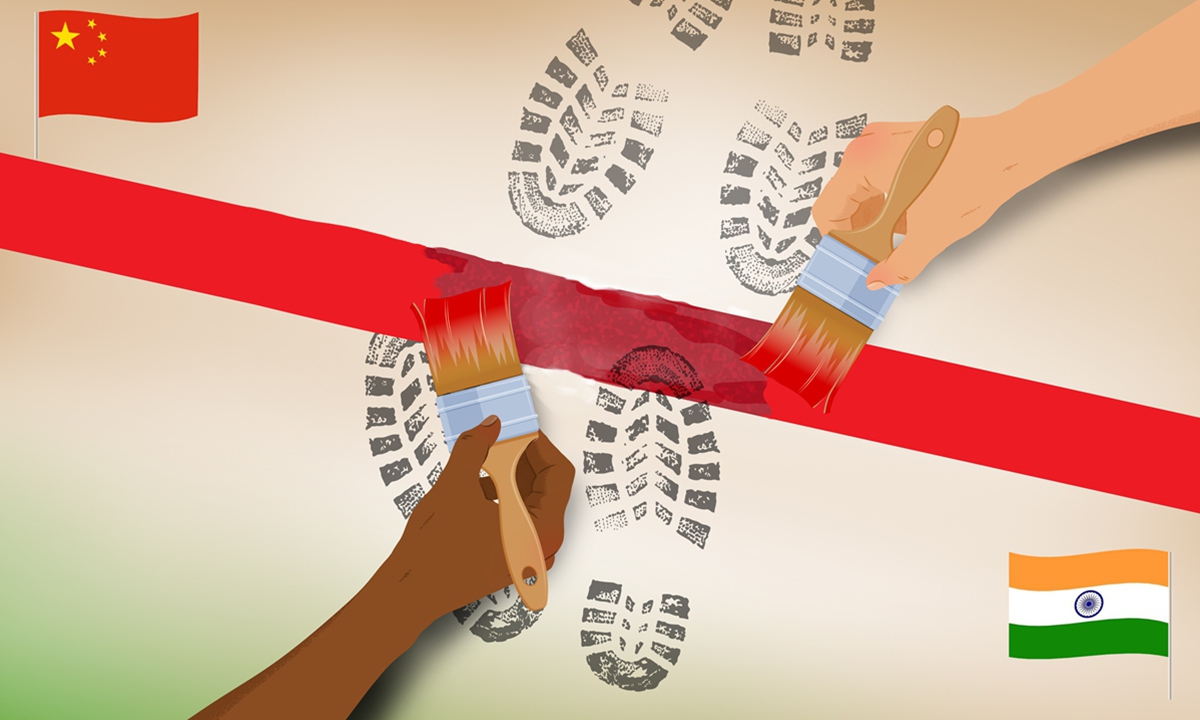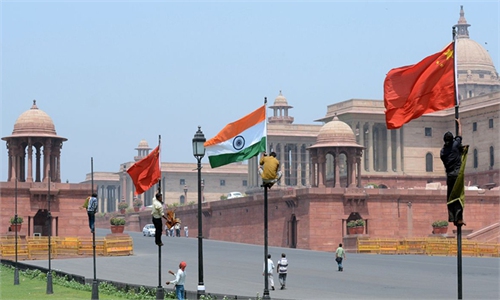Indian media's reports on detailed border disengagement plan with China 'inaccurate': sources

China India Photo: GT
Indian media's reports that detailed arrangements for a proposed disengagement plan are being discussed and finalized by Chinese and Indian militaries are inaccurate and not helpful for the two sides to reach their established goals, the Global Times has learned from sources.
Times of India reported on Thursday that China and India have "broadly agreed to pull-back troops, tanks, howitzers and armored vehicles from 'friction points' in the Pangong Tso-Chushul area in eastern Ladakh."
The media also cited a source as saying that the "exact modalities and sequencing of steps" as well as the joint verification process for the proposed disengagement plan are "being discussed and finalized" by the two armies as a follow-up to the eighth round of corps commander level talks on November 6.
The "disengagement plan" reported by Indian media includes: The People's Liberation Army troops will withdraw to their positions east ofFinger-8 areas from their current position of Finger 4 on the north bank of Pangong Tso lake while the Indian troops will withdraw to their post between Fingers 2 and 3. The area between Finger 4 and 8 will be a non-patrol area. Around 30 percent of troops will be withdrawn every day for three days.
The onset of the brutal winter, which is exacting a toll on the thousands of rival soldiers deployed in altitudes of over 15,000 feet, also seems to have made China "more agreeable" to de-escalation, the Times of India wrote.
However, the Global Times learned from sources on Thursday that while the momentum brought by the eighth round of corps commander talk is good, the "disengagement plan" mentioned by the media is "not accurate."
Some Indian media outlets are good at projecting India's tough stance through partially true and partially false information, with the aim of stirring up domestic nationalism, sources told the Global Times.
The Global Times has learned that whether the disengagement of troops starts from southern or northern of Pangong Tso Lake, how to withdraw and with how many troops were key topics during the previous rounds of talks.
The sources told the Global Times that India has always had "unrealistic" ideas about the Line of Actual Control (LAC) and disregarded history, unilaterally believing that Fingers 4 to 8 are its patrolling areas, and has sought to gain bargaining chips in talks by fishing for interests in the disputed border area.
"This is the wrong premise for some India people in drafting policies," the sources said.
Qian Feng, director of the research department at the National Strategy Institute at Tsinghua University, told the Global Times that the disengagement plan mentioned by Indian media is the media's self-interpretation about the outcome of previous talks between the two sides. But it also to some extent reveals the actual unilateral thought of Indian militaries.
However, it cannot represent the result the two sides have reached, nor will it be the final plan, Qian said.
Qian noted that as it is Diwali, the most important festival in Hinduism, sources in India gave information on the so-called disengagement plan to the public via media to pressure China as well as relieve the pressure on the Indians.
The Indian military's eagerness is understandable, as the weather in the stand-off area has become colder and it faces great pressure in ensuring logistical supplies. But this kind of "tip-off" is not good for the two sides to implement the consensus reached in previous rounds of talks, and could mislead opinion, Qian said.
China and India have had candid exchanges on key issues of the disengagement plan, including where to start and how many troops should be pulled back. The two sides have different demands but are gradually reaching consensus, and both have made efforts and sent positive signals to the outside world, Qian said.
But Indian media's reports also verify that after the eighth round of talks, China and India are detailing plans to solve the border issues in accordance with the consensus reached by the top leaders.
"The two sides are working in the same direction to solve the problem and also have reached some consensus," Qian noted.
China and India issued a joint release on November 6 after the talks, which noted, "Both sides agreed to maintain dialogue and communication through military and diplomatic channels, and, taking forward the discussions at this meeting, push for the settlement of other outstanding issues, so as to jointly maintain peace and tranquility in the border areas."
Qian pointed out that although the release did not mention "disengagement" between the two militaries, the "other outstanding issues" mentioned in the release obviously refers to the disengagement issue.
On September 4, defense ministers from China and India held talks in Moscow, during which Wei Fenghe, China's Defense Minister, said that the reasons and truth behind the current tense border situation between China and India are very clear, and the responsibility lies entirely with the Indian side. China will not lose one inch of its territory and the military has the resolution, capability and confidence to safeguard the country's sovereignty and territorial integrity.


